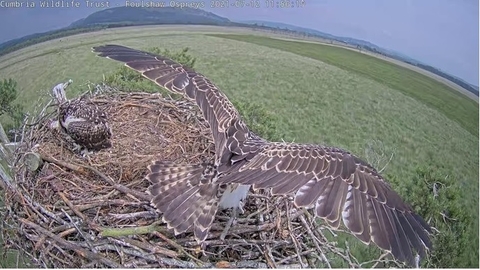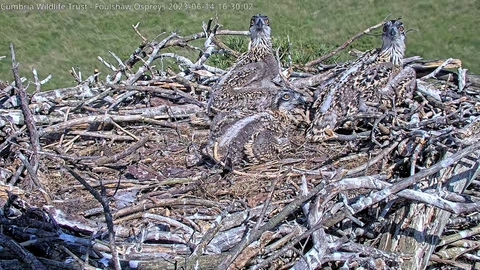Hatching
Young #FoulshawOsprey chick number 1 hatched 37 days after the egg was laid. Numbers 2 and 3 just 36 days after their eggs were laid.
Ospreys can control the incubation period of their eggs and the adult female, Blue 35, was able to reduce the time between the first and last egg hatching helping to ensure that all chicks have a more even chance of survival.









Comments